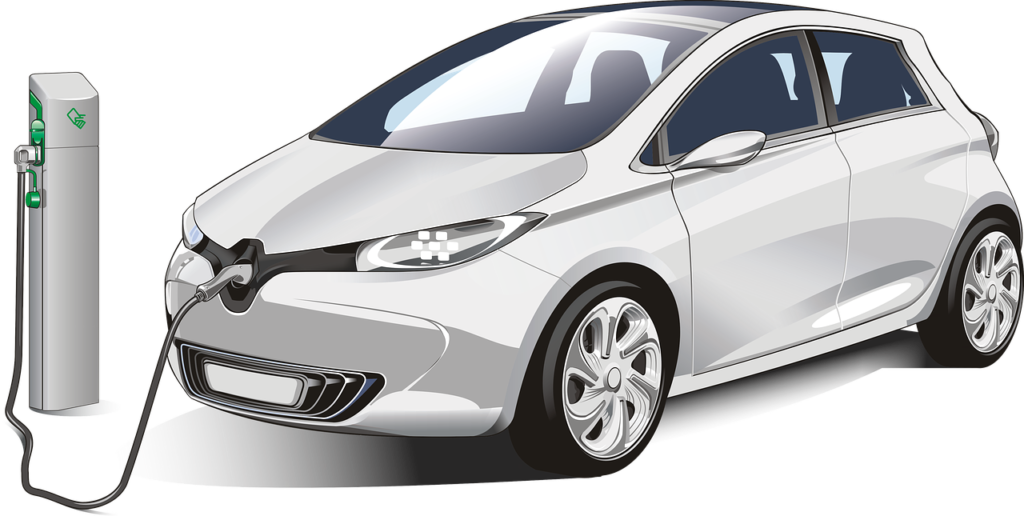Transportation and Decarbonisation Strategy
Electric energy transport system occurs when the different transport modes are powered by energy that result or come from the flow of electrically charged objects that promote or allow mechanical movement of vehicles. There are various vehicles of different modes which are rapidly becoming more efficient and economical by using electrical energy as a source of power which is derived from electric potential energy charged capacitors or objects.
Electric energy transportation system is a major route towards global sustainable environment. Hence, electric transport has different benefits which include reducing carbon dioxide emission, reducing the negative effects of climate change, reducing operational cost, promoting public health and promoting energy security by reducing high demands for fossil fuel, amongst others.
Government of various countries are now interested in electric energy transportation system as a strategy for effective decarbonisation of all transport modes such as road transport, rail transport, air transport and marine transport with the use of a renewable energy from electricity. Since, many countries depend on these modes of transport for the movement of people and goods around the world and the fact that, these transport modes use fossil fuel that promote heavy emission of carbondioxide, that negatively affects the climate hence, the need to promote the electric energy transportation system to promote healthy environment globally explains the intervention of governments in various countries.
Electric Vehicle System
What is Electric Vehicle?
Electric vehicle is a medium by which objects e.g. people and goods, are carried, or transported through the use of one or more electric motors for such movement or transportation. Put differently, electric vehicle is a mechanized object or carriage that uses electrifying or charged battery engine for the movement of people or goods. Still simply put, electric vehicle is an automobile that uses electricity as a source of power for its movement. Or better still, electric vehicle is a vehicle that’s exclusively powered through electric motors that use electricity charged batteries. Electric vehicles are becoming more popular in use because they are quieter, comfortable, environmental friendly, cost effective and give a measure of high social prestige to the users or owners.
Electric Source of Power
A charging station or electric vehicle supply equipment (EVSE) is a power supply outfit that provides electric power for recharging all forms of plug-in electric vehicles such as battery electric vehicles, electric trucks, electric buses, neighborhood electric vehicles and plug-in hybrid vehicles. There are public and private charging stations. The efficiency of electric vehicles in terms of their strong engine performance is better than fuel engine vehicles or internal combustion engine.
Types of Electric Vehicles
However, electric vehicles can be used in all modes of transport which include road and rail vehicles; likewise, in the other modes. Hence, we have electric boats, electric underwater vessels, electric aircraft and electric spacecraft. Electric vehicles are made with great comfort, less noise and are easy to operate when you compare them with vehicles that use fuel or gasoline engine.
Technological improvements in manufacturing of electric vehicles, especially in different areas like the batteries i.e. (improvement in its energy density), the electric motors i.e. (progress in performance that exceeds that of fuel engine) amongst others, promote the use of electric vehicles as essential means of reducing the use of fossil fuels, the emissions of carbon dioxide and any other pollutant.
Furthermore, a vehicle that uses a conventional fuel engine i.e. (internal combustion engine (ICE), and electric powered system is referred to as a hybrid electric vehicle (HEV). The major benefits of a hybrid electric vehicle are that it promotes fuel economy, reduces carbon dioxide emission and it also has better high performance than the conventional vehicles. However, there are hybrid electric cars, trucks, buses, pickups, tractors, boats and aircrafts made with highly improved technologies, such as start-stop system, which is the ability of the vehicle to switch off the engine when it’s idled or inactive and to restart itself when it’s needed, including the ability to power the vehicle’s electric drive motor or recharge the vehicle’s battery, amongst other technological advancements.
Plug-in Electric Vehicle (PEV) Category
A plug-in electric vehicle is used to refer to any motor vehicle that can be easily powered by any external source of electricity like wall sockets and electricity rechargeable battery. It’s important to note that, plug-in electric vehicle (PVE) is among the other electric vehicles which include, battery electric vehicle (BEV), plug-in hybrid electric vehicle (PHEV), hybrid electric vehicle and conventional internal combustion engine vehicle (fuel engine)
Range-Extended Electric Vehicle (REEV), (Range Extender)
A range-extended electric vehicle is a type of vehicle that uses both electric motor and a plug-in battery as major sources of power. However, a supplementary or additional fuel combustion engine is used temporally as alternative to charge the battery and not as the main power source for the vehicle.
Railbone Electric Vehicle
Railway electrification transport system is an easy modern means of transport used for the movement of people and goods in different countries, mostly in Europe and Asia. The securely placed rail-line physical structures are essential, basic physical qualities that easily allow railway transport to use electricity as a source of power for its movement through the overhead lines. Types of electric vehicles for rail transport include electric locomotives, electric multiple units, electric trains (streetcars), electric light rail systems, and electric rapid transit. Notably, there are trains that use electric powered battery as a source of energy to operate on non electrified rail lines.
Seaborne Electric Vehicle / Electric Boat or Ship
Contrarily to the use of diesel engine vehicles in water or sea transportation, fairly large number of mariners or marine liners nowadays uses electric motors in various marine vehicles like sailboats, electric ferries, submarines, electric tugboats amongst others. They use solar cells and batteries.
Airborne Electric Vehicle / Electric Aircraft
The use of electric aircrafts in aviation industry for both piloted and unpiloted air vehicles and aircrafts is another modern innovation in air transportation. The electric aircrafts use batteries, solar panels and nuclear power as sources of energy. Additionally, battery powered aircrafts have been used to travel to the moon and other planets.
However, virtually every country in the world makes use of motorized transport on land, sea, and air. It’s worthy of note that this vehicle depends on internal combustion engines that generally make use of fossil fuel that generate carbon dioxide emissions. Therefore, an investment in infrastructure that will allow low and zero emission vehicle operations will be necessary to achieve global emission reductions. Hence, the need for various government interventions to make this happen in the nearest future may be inevitable.
Image by Painter06 credited to pixabay


